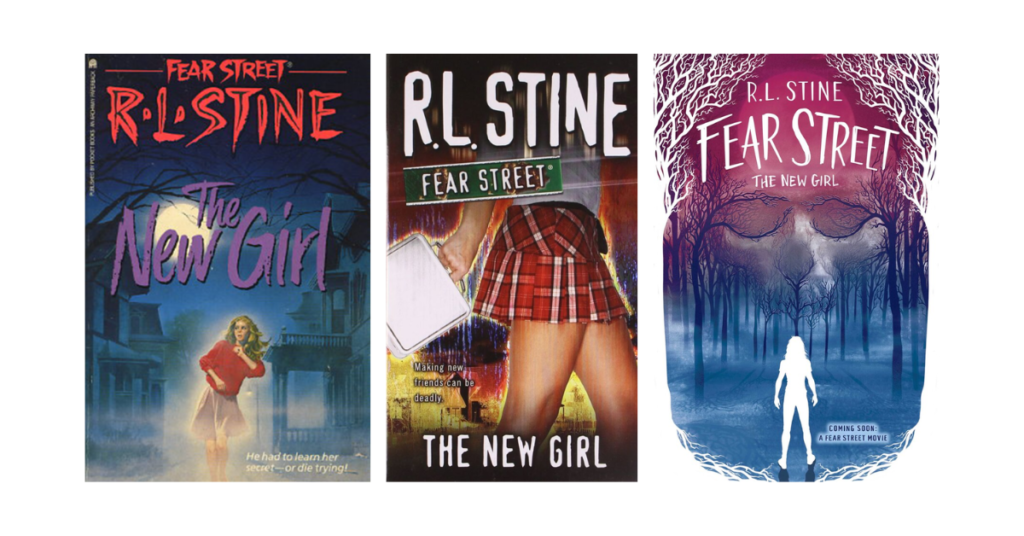Fear Street Books: A Comprehensive Exploration of R.L. Stine's Horror Franchise

R.L. Stine’s Fear Street series, launched in 1989 with The New Girl, has captivated readers for decades. More than 80 million copies were sold by 2003, cementing its place as a bestseller and a significant cultural phenomenon. The series’ enduring popularity stems from its blend of classic horror tropes, relatable teenage characters, and suspenseful narratives, making it a cornerstone of young adult horror literature. This exploration delves into the Fear Street books, examining their genres, impact, and legacy.

The Fear Street Universe: A Multifaceted Horror Series
The Fear Street franchise extends far beyond its original novels. Numerous spin-off series, each with its unique style and target audience, contributed to the series’ vast and varied landscape. Understanding the interconnectedness of these sub-series provides a more complete picture of the Fear Street universe.

1. Original Fear Street Series: The Foundation of Fear
The original Fear Street novels, published from 1989 onwards, established the core elements of the series: the cursed town of Shadyside, its haunted locations, and a cast of memorable teenage characters caught in terrifying situations. Each book, typically a standalone story, delved into a different horrific event, often involving murder, supernatural occurrences, or a combination of both. These novels established the series’ hallmark formula of suspense, unexpected twists, and a chilling conclusion. The sheer volume of these original stories — numbering over sixty — solidified the series’ impact and created a rich tapestry of interconnected narratives.

2. Expanding the Fear: Spin-Off Series and Their Unique Appeal
The resounding success of the original Fear Street series led to the creation of several spin-offs, each branching out in different directions to appeal to a broader readership and explore new horror subgenres.
2.1 Fear Street Super Chiller: Amplified Horror
Fear Street Super Chiller books offered a more intense, terrifying reading experience compared to the original series. These novels featured heightened suspense, more graphic elements, and often incorporated elements of the supernatural that were prominent in the main series but taken to a more extreme level. While still aimed at a young adult audience, Fear Street Super Chiller catered to those seeking a greater level of fright.
2.2 Ghosts of Fear Street: A Younger Audience Embraces Fear
Ghosts of Fear Street, published from 1996 to 1998, aimed for a younger demographic (ages 8-12). Although published under R.L. Stine’s name, these books were ghostwritten. This sub-series introduced a lighter, gentler approach to horror, with frightening yet less graphic encounters with various supernatural creatures within the town of Shadyside. The series provided a gateway to the Fear Street world for younger readers before transitioning to the more intense stories of the original series.
2.3 Fear Street Cheerleaders: Horror with a Twist
The Fear Street Cheerleaders series infused typical teen drama with elements of horror. While the original Fear Street books focused more broadly on the horrors of Shadyside, Fear Street Cheerleaders explored the intense dynamics of high school social life, infusing those settings with terror. Jealousy, betrayal, and rivalries provide the backdrop for escalating suspense and terrifying events, offering a unique angle on the Fear Street horror formula.
2.4 Fear Street Sagas: Epic Horror Narratives
Fear Street Sagas presented multi-part stories, stretching the narratives across multiple books. Unlike the mostly standalone tales of the original series, these linked books created a larger, overarching storyline, increasing the suspense and intrigue as the narrative progressed across the series. This approach allowed for more complex characters and a deeper exploration of Shadyside’s cursed history.
2.5 Fear Street: 99 Fear Street, The Cataluna Chronicles, and Fear Park: Diversification of Settings and Themes
The series also expanded beyond the core Shadyside setting. 99 Fear Street offered a trilogy set in a haunted house, moving the action from the familiar town streets to a confined and claustrophobic environment. The Cataluna Chronicles introduced a new location and themes, and Fear Street: Fear Park added a thrilling carnival setting, enriching the diverse horror elements of the franchise. Each of these spin-offs offers distinct narratives while still maintaining the core appeal of the Fear Street brand.
The Author: R.L. Stine and His Contribution to Young Adult Horror
R.L. Stine’s prolific career significantly shaped the landscape of young adult horror. His writing style, characterized by its accessibility and compelling narratives, appealed to a wide audience. He mastered the art of creating suspense, incorporating the perfect blend of fear and humor, resulting in a unique brand of horror that resonated profoundly with young readers. His influence stretches beyond the Fear Street series, with the equally successful Goosebumps series further solidifying his status as a master of children’s and young adult horror fiction.
Fear Street’s Genres: A Diverse Horror Landscape
The Fear Street series spans various horror subgenres, providing variety and expanding its appeal across a wide spectrum of reader tastes. The books blend supernatural horror with slasher elements, psychological thrillers, and even hints of mystery. This genre diversity is a key factor in the franchise’s long-term success.
Cultural Impact and Adaptations: Fear Street Beyond the Page
The Fear Street series transcended its status as a book series, achieving noteworthy cultural impact and widespread recognition.
Literary Influence and Awards
The series profoundly influenced the young adult horror genre, establishing a formula that subsequent authors adapted and expanded upon. The books earned spots on numerous bestseller lists, including The New York Times, USA Today, and Publishers Weekly. While the books may not have won major literary awards in the traditional sense, their commercial success and ongoing popularity speak to their cultural significance and impact.
Film and Television Adaptations: Bringing Fear to the Screen
The Fear Street trilogy on Netflix brought the series to a new generation of viewers. These films successfully adapted the spirit of the books while updating the narratives and characters for a modern audience. The films’ success revitalized the Fear Street brand and introduced the series to a larger audience, further amplifying its cultural footprint.
Community and Fan Culture: A Shared Love of Fear
The Fear Street series fostered a vibrant community of fans who share their experiences and engage in discussions about the books and their adaptations. Online forums, social media groups, and fan-created content demonstrate the enduring legacy of the series and the deep connection it holds for readers.
Conclusion: The Enduring Legacy of Fear Street
R.L. Stine’s Fear Street remains a powerful force in young adult literature. Its success stems from a carefully crafted formula: relatable characters, effective use of suspense, and a diverse range of horror subgenres. The franchise’s expansion beyond the original novels, including its successful Netflix adaptation, further emphasizes its enduring appeal and influence. The Fear Street books continue to resonate with readers, establishing a lasting legacy in the world of young adult horror and beyond.